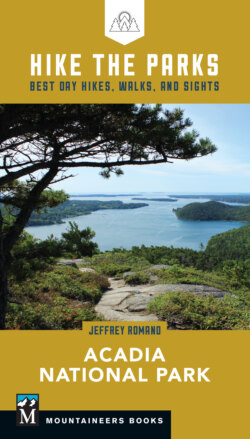Читать книгу Hike the Parks: Acadia National Park - Jeff Romano - Страница 14
На сайте Литреса книга снята с продажи.
ACADIA TODAY
ОглавлениеWhen the glaciers finally disappeared more than eleven thousand years ago, they left behind a landscape dominated by three natural features.
Rocky Shoreline. Surrounded by the cold waters of the Gulf of Maine, Acadia is home to more than 40 miles (64 km) of rocky shoreline highlighted with scenic promontories, steep cliffs, narrow chasms, and smooth ledges. Hidden within the coves, inlets, and peninsulas are many beaches. Due to the age of the coast, cobble beaches are more common than sandy ones. Not the best places for a swim, these rocky beaches generate an alluring sound as the waves roll in and out with the tides.
Expansive Wetlands. Wetland habitats make up more than 20 percent of Acadia. These include marshes and estuaries where fresh water and salt water collide. Acadia is also home to many small streams, brooks, bogs, vernal pools, and forested wetlands. In addition, there are fourteen lakes and ponds greater than 10 acres (4 hectares) as well as ten ponds smaller in size either within or adjacent to the park. Collectively, Acadia’s wetlands are critically important to the region’s flora and fauna, and many provide fresh drinking water to local communities.
Coastal Mountains. Compared to many mountain ranges around the world, Acadia’s peaks are merely hills rising to only 1530 feet (466 m). Yet their proximity to the ocean, the ruggedness of their slopes, and their miles of exposed granite combine to transform these diminutive heights into impressive summits and breathtakingly beautiful mountains. The park’s topography exhibits significant differences across modest elevation changes; plant and animal species vary with the ascent, as do weather conditions, which can change quickly. There are no other places like Acadia’s mountains along America’s Atlantic coast.
